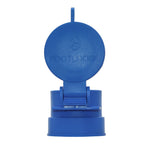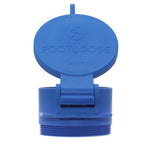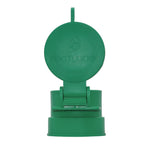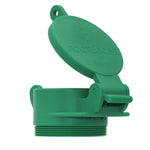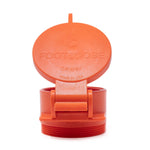You have no items in your shopping cart.
You’re out driving on the road when you feel your vehicle go over a harsh bump – which, you later come to realize, is a manhole cover.
The metal cap makes a clunking sound as it settles back into the road, and you continue driving as usual. However, you start to wonder: if manhole covers are intended to provide easy access points for maintenance workers, why are they placed in the middle of the road where fast-moving vehicles drive over them?
Many citizens argue that the more logical placement for a manhole cover would be somewhere away from the road, like the sidewalk. That way, when maintenance is necessary, the roads wouldn’t have to be closed off, inconveniencing drivers in the process.
Manholes are a vital part of any neighborhood or city, but their unusual placement sparks controversy over whether it’s necessary to have them in the middle of oncoming traffic. In this article, we’ll answer this question: why are manhole covers on the road?
What Do Manhole Covers Do?
Manhole covers carry out vital functions to cities, neighborhoods, and maintenance workers. Although many different types of manhole covers exist, all of them take on the same responsibilities to protect and serve the environment they are placed in.
Provide access points for maintenance workers
Below many city streets are several underground caverns dedicated to public utilities like sewers and electrical systems. To gain access to these utility vaults, maintenance workers enter through a tunnel called a manhole using a built-in ladder to climb down and perform repairs, maintenance, and inspections. Covering these accessways are manhole covers, which can be conveniently removed using manhole hooks whenever necessary.
Protect pedestrians and utility vaults
Without manhole covers, entryways to sewers and utility vaults would be gaping holes in the middle of the road or sidewalk. Uncovered, these holes in pedestrian-heavy areas would pose a severe threat to safety. While manhole covers serve the purpose of keeping pedestrians safe, they also help prevent unwanted materials, such as rodents and debris, from falling into utility vaults.

Why Manhole Covers Are on the Road
If maintenance holes are intended to be safely accessed by technicians, then why are they located in the center of the road where vehicles can run over them? And if sidewalk manholes already exist, why are manholes still being built on busy streets?
Convenience For Pedestrians
When it becomes time for maintenance workers to perform repairs and inspections on underground utility systems, pedestrians walking around a manhole can quickly become troubled over where to go. In fact, pedestrians might find that in order to bypass the work occurring on the sidewalk, they would need to walk into the road, unnecessarily risking their safety.
Alternatively, should maintenance need to be performed on a manhole in the middle of a street, a portion of the road would simply be blocked off, and traffic could be redirected to another part of the road. Although this means that drivers may have to go through a few minor inconveniences, it allows pedestrians and cyclists to safely remain on their specified sides.
Distance Between Utilities
For safety reasons and to reduce lines overlapping, certain utility systems need to be separated by certain distances. If utilities are placed too close together, it would be difficult and costly for workers to reach these systems, and there would be a greater risk of damaging one line while working on another. Plus, a utility line in the middle of the road can efficiently be accessed by buildings on both sides of the street.
Relocation Is Costly
Oftentimes, the reason a manhole cover is on the road is due to the way roads were built decades ago. A road built 50 years ago may have had one lane going in each direction and a manhole cover placed somewhere next to it. Years later, the need to support more traffic prompted the construction of new roads around the previously-installed manholes. Rather than pulling pipes and catch basins out of the ground, it’s much cheaper to leave manhole covers where they were.
Although it is certainly possible for cities to relocate manholes by redoing existing utility vaults and roads or even building entire new storm systems, it would cost millions to do so. Since the only real inconvenience to vehicles is a small bump, cities may tend to look over this issue.
Do You Mind Manhole Covers on the Road?
Despite outlining the reasons why manhole covers may need to be in the middle of a street, many citizens continue to find the cast-iron plates to be a nuisance while driving. After all, the pleasure of driving on a smooth road can quickly go downhill after running over a bumpy manhole cover.
However, despite frustrations, most cities are not willing to take up functioning streets and rebuild them due to a bump in the road. Do you think manhole covers should be kept on the road, or should they be placed somewhere else?
Manhole covers are placed on city streets in several parts of the world, but in all, their production remains the same. Take a look at how manhole covers are made in our recent blog post.



